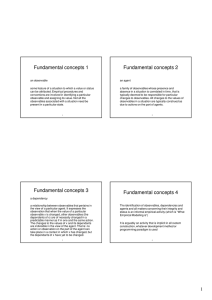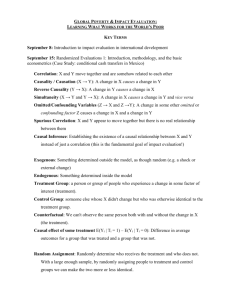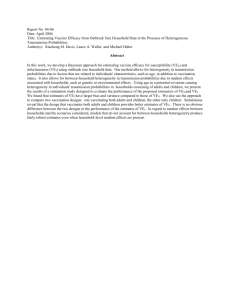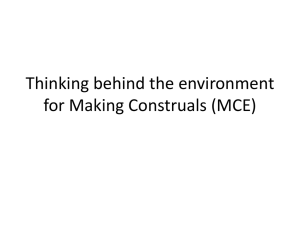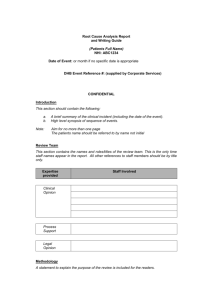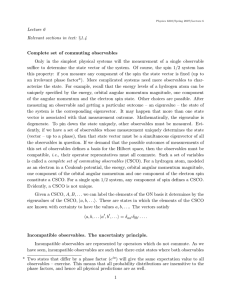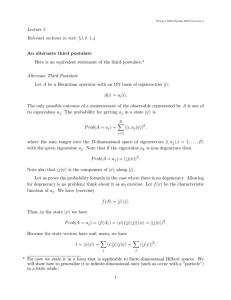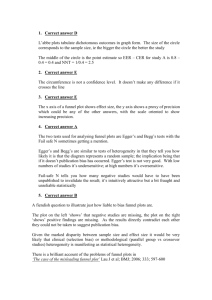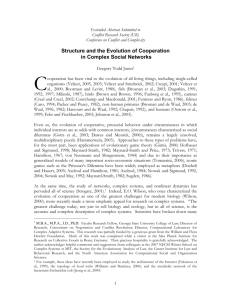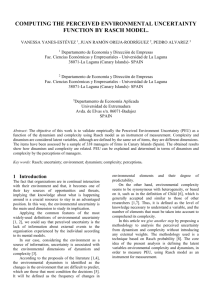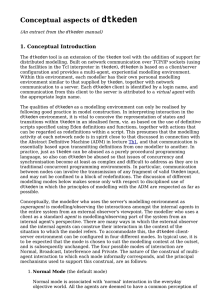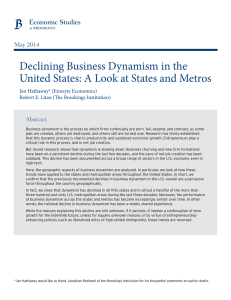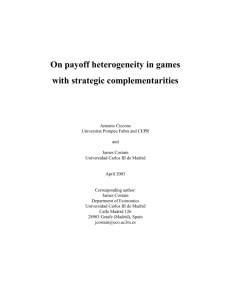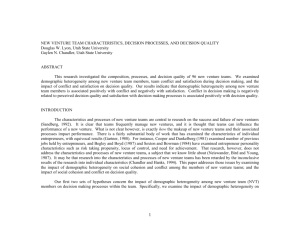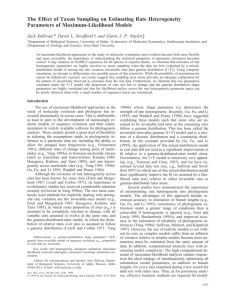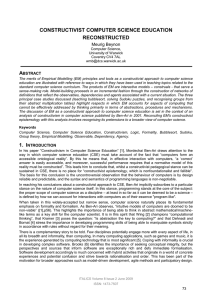Sample Course Outline
advertisement
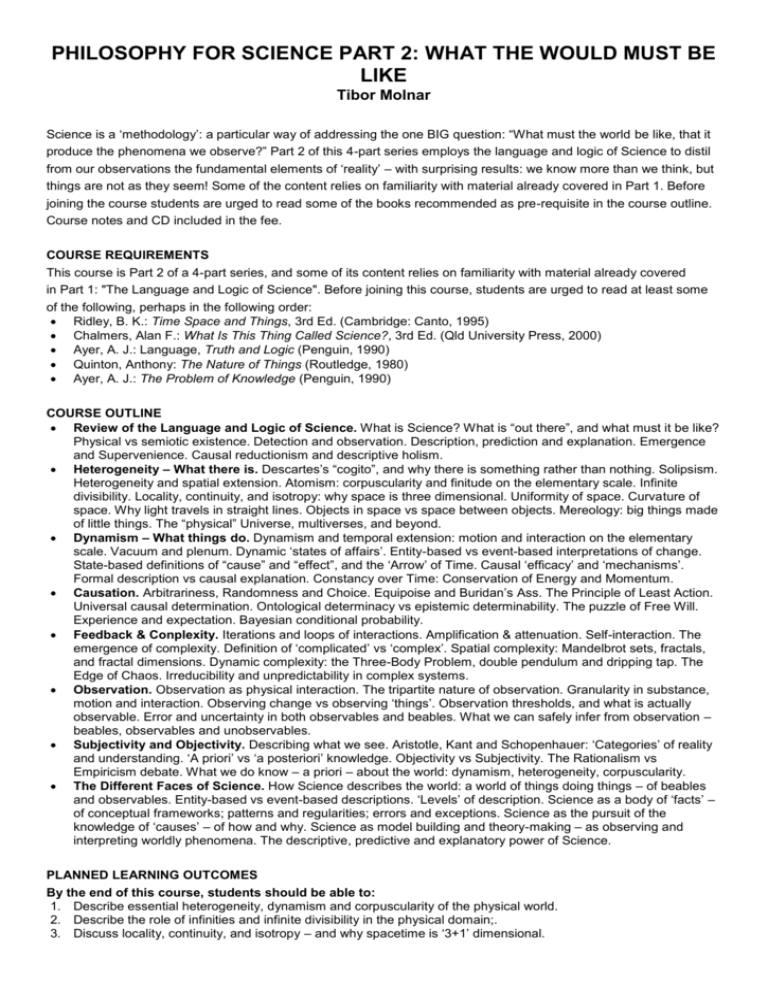
PHILOSOPHY FOR SCIENCE PART 2: WHAT THE WOULD MUST BE LIKE Tibor Molnar Science is a ‘methodology’: a particular way of addressing the one BIG question: “What must the world be like, that it produce the phenomena we observe?” Part 2 of this 4-part series employs the language and logic of Science to distil from our observations the fundamental elements of ‘reality’ – with surprising results: we know more than we think, but things are not as they seem! Some of the content relies on familiarity with material already covered in Part 1. Before joining the course students are urged to read some of the books recommended as pre-requisite in the course outline. Course notes and CD included in the fee. COURSE REQUIREMENTS This course is Part 2 of a 4-part series, and some of its content relies on familiarity with material already covered in Part 1: "The Language and Logic of Science". Before joining this course, students are urged to read at least some of the following, perhaps in the following order: Ridley, B. K.: Time Space and Things, 3rd Ed. (Cambridge: Canto, 1995) Chalmers, Alan F.: What Is This Thing Called Science?, 3rd Ed. (Qld University Press, 2000) Ayer, A. J.: Language, Truth and Logic (Penguin, 1990) Quinton, Anthony: The Nature of Things (Routledge, 1980) Ayer, A. J.: The Problem of Knowledge (Penguin, 1990) COURSE OUTLINE Review of the Language and Logic of Science. What is Science? What is “out there”, and what must it be like? Physical vs semiotic existence. Detection and observation. Description, prediction and explanation. Emergence and Supervenience. Causal reductionism and descriptive holism. Heterogeneity – What there is. Descartes’s “cogito”, and why there is something rather than nothing. Solipsism. Heterogeneity and spatial extension. Atomism: corpuscularity and finitude on the elementary scale. Infinite divisibility. Locality, continuity, and isotropy: why space is three dimensional. Uniformity of space. Curvature of space. Why light travels in straight lines. Objects in space vs space between objects. Mereology: big things made of little things. The “physical” Universe, multiverses, and beyond. Dynamism – What things do. Dynamism and temporal extension: motion and interaction on the elementary scale. Vacuum and plenum. Dynamic ‘states of affairs’. Entity-based vs event-based interpretations of change. State-based definitions of “cause” and “effect”, and the ‘Arrow’ of Time. Causal ‘efficacy’ and ‘mechanisms’. Formal description vs causal explanation. Constancy over Time: Conservation of Energy and Momentum. Causation. Arbitrariness, Randomness and Choice. Equipoise and Buridan’s Ass. The Principle of Least Action. Universal causal determination. Ontological determinacy vs epistemic determinability. The puzzle of Free Will. Experience and expectation. Bayesian conditional probability. Feedback & Conplexity. Iterations and loops of interactions. Amplification & attenuation. Self-interaction. The emergence of complexity. Definition of ‘complicated’ vs ‘complex’. Spatial complexity: Mandelbrot sets, fractals, and fractal dimensions. Dynamic complexity: the Three-Body Problem, double pendulum and dripping tap. The Edge of Chaos. Irreducibility and unpredictability in complex systems. Observation. Observation as physical interaction. The tripartite nature of observation. Granularity in substance, motion and interaction. Observing change vs observing ‘things’. Observation thresholds, and what is actually observable. Error and uncertainty in both observables and beables. What we can safely infer from observation – beables, observables and unobservables. Subjectivity and Objectivity. Describing what we see. Aristotle, Kant and Schopenhauer: ‘Categories’ of reality and understanding. ‘A priori’ vs ‘a posteriori’ knowledge. Objectivity vs Subjectivity. The Rationalism vs Empiricism debate. What we do know – a priori – about the world: dynamism, heterogeneity, corpuscularity. The Different Faces of Science. How Science describes the world: a world of things doing things – of beables and observables. Entity-based vs event-based descriptions. ‘Levels’ of description. Science as a body of ‘facts’ – of conceptual frameworks; patterns and regularities; errors and exceptions. Science as the pursuit of the knowledge of ‘causes’ – of how and why. Science as model building and theory-making – as observing and interpreting worldly phenomena. The descriptive, predictive and explanatory power of Science. PLANNED LEARNING OUTCOMES By the end of this course, students should be able to: 1. Describe essential heterogeneity, dynamism and corpuscularity of the physical world. 2. Describe the role of infinities and infinite divisibility in the physical domain;. 3. Discuss locality, continuity, and isotropy – and why spacetime is ‘3+1’ dimensional. 4. Discuss the nature of interaction, feedback, and the emergence of complexity and chaos. 5. Discuss the limits to observation, and the difference between observables and beables. Identify the rational and empirical foundations, and the predictive and explanatory power, of Science.
